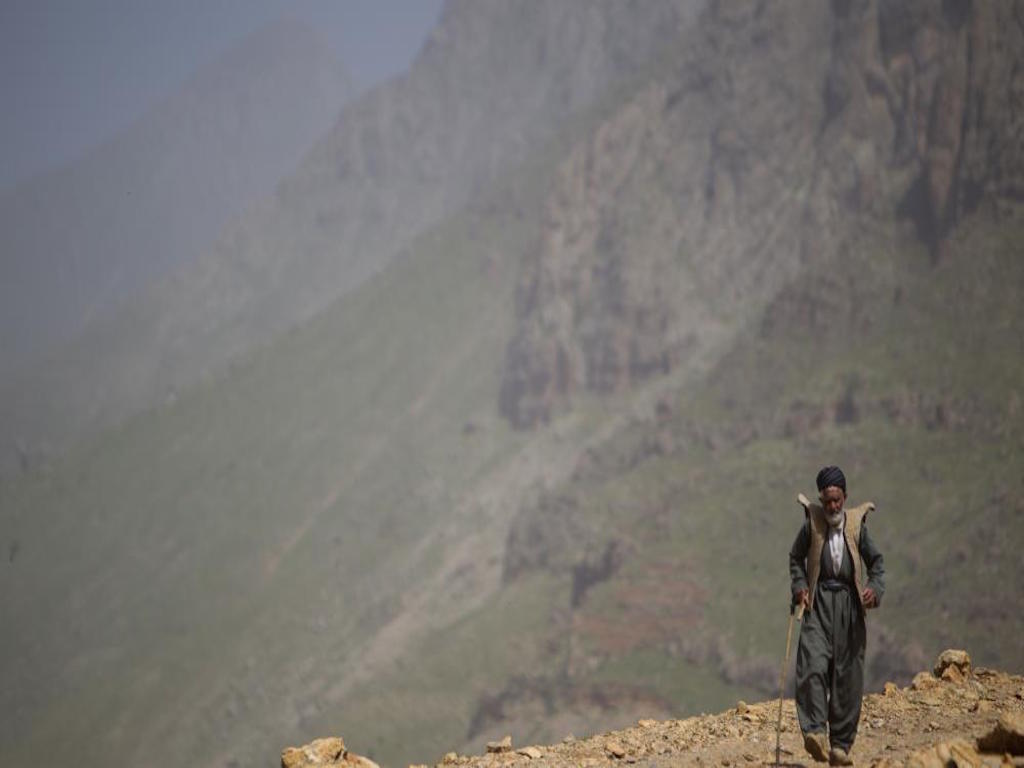Operating in Exile Has Hindered Their Effectiveness
One of the more notable developments from the fight against the Islamic State (or ISIS) has been the emergence of a Kurdish public sphere in the Middle East. Since U.S. coalition forces began their campaign against the terrorist group in the summer of 2014, Iraqi Kurds, for example, have gained additional territories, military equipment, and new partners and have become more vocal in their push for independence. Indeed, Iraqi Kurds have more or less captured from ISIS most of the lands that Iraq’s 2005 Constitution originally designated as disputed between the Kurdistan Regional Government and central Iraqi government. The more land ISIS has lost, the closer the Kurds have gotten to securing all of the areas within the boundaries of their projected homeland. The Kurdistan Regional Government (KRG) has since expanded its territory by more than 40 percent. Moreover, the upcoming independence referendum, currently set for September 25, will take place not only within the official Kurdish borders but in the disputed territories as well.
Syrian Kurds have also transitioned from being an oppressed and marginalized minority to one of the most important political groups in the country. After Washington began supporting the Syrian Democratic Forces (SDF), the militia effectively became the United States’ boots on the ground. The backbone of the SDF, the People’s Protection Units (YPG), is the armed wing of the Syrian Kurdish Democratic Union Party (PYD), which first established its foothold in northeastern Syria in July 2012 and later dramatically expanded the boundaries of its enclave. With the Syrian Kurds’ successes has come international recognition and hence legitimacy, much to the dismay of Turkey, which feels threatened by their power and irredentist ambitions. Turkey has not welcomed the fact that the Kurds have become an increasingly powerful political actors in Syria in recent years. Similarly, despite suffering setbacks in the November 2015 Turkish repeat election, in June 2015 the pro-Kurdish People’s Democracy Party (HDP) initially received the highest percentage of the vote (13.1 percent) in the history of civilian Kurdish politics in Turkey, passing the ten percent electoral threshold needed to gain a seat in Parliament.
And yet, amid this growth in Kurdish political power, Iranian Kurds have remained quiet, despite being the largest Kurdish group in the Middle East after Turkey. What is even more puzzling is that even though the Iranian regime continues to execute dozens to hundreds of Kurdish dissidents every year, Iranian Kurds have not effectively sought to change their fate or utilize their power. In fact, Iranian Kurdish politics have remained largely unresponsive to the general regional upheaval and even to major developments inside Iran.
THE POLITICS OF EXILE
There are several reasons why Iranian Kurds have not similarly risen to power like their Iraqi, Syrian, and Turkish counterparts. This seems puzzling because of all Kurdish groups, only the Iranian Kurds have tasted statehood in the modern Middle East, albeit a short-lived one. The Republic of Kurdistan was declared in Mahabad on January 22, 1946, but lasted only 11 months before the Iranian state forcefully terminated the experiment and executed the leader of the republic, Qazi Mohammed. This experience has formed in part and parcel the Kurdish national consciousness and remains a reference point for Kurdish nationalism. In fact, Masoud Barzani, the president of the Kurdistan Regional Government, was born under the jurisdiction of the Mahabad Kurdish republic and regularly mentions his desire to die under the Kurdish flag when advancing his case for Kurdish independence.
To be sure, on several recent occasions, Kurdish groups have had armed clashes with the Iranian state. Yet such incidents have not morphed into any major political development such as instigating a sustained and effective political campaign against the regime inside Iran. One of the primary reasons for this is that, in contrast to Kurdish political parties in Iraq, Syria, and Turkey, Iran’s Kurdish groups, such as Kurdistan Democratic Party of Iran (KDP-I) and the Komala Party, have been in exile (mostly in Iraqi Kurdistan) for decades. This has created a level of disconnect between Kurdish parties and Kurdish public in Iran.
Moreover, operating in exile has put a strain on Iranian Kurdish parties’ effectiveness. They must balance their aspirations with their host government’s relations with Tehran, in this case those of the Kurdistan Regional Government of Iraq. Aware of this fact, Tehran has been able to successfully exert pressure on the Kurdistan Regional Government in general and the Kurdistan Democratic Party (the dominant party in the government) in particular for the armed activities of the Iranian Kurdish parties. In recent years, for example, it used its considerable influence over the Iraqi central government to restrain the activities—including attacks on the Iranian military posts along the Iraq-Iran border—of the Iranian Kurdish parties and urged Baghdad to pressure the Kurdistan Regional Government to do the same in its territory. As a result, in March 2017, the Iraqi Parliament’s pro-Iranian State of Law bloc proposed a motion that called on the Iraqi government to either disarm or expel Iranian Kurdish groups based in the Kurdistan Regional Government that are fighting against Iran.
Iran also enjoys leverage over the left-leaning Patriotic Union of Kurdistan (PUK), one of the two major Iraqi Kurdish parties that is centered in the Iraqi Kurdish city of Sulaymaniyah and controls areas of Iraqi Kurdistan bordering Iran. (Iran has also indirectly pressured Komala through the PUK.) There appears to be a tacit agreement between the Kurdistan Regional Government and Iran in which the former continues to host Iranian Kurdish opposition leaders and cadres in Iraqi Kurdistan in exchange for restraining them from organizing anti-Iran activities, both politically and militarily. Neither Komala nor KDP-I has undertaken any major sustained activity against Iran in more than two decades, aside from a few recent instances. This is probably one of the reasons why some scholars describe these parties as going through political retirement.
Then there is the Iranian Kurdistan Free Life Party (PJAK). It is an offshoot of the Turkish Kurdistan Workers’ Party (PKK) and the two groups share a base in the Qandil mountains bordering Iran. This group, too, has had to set its hopes for Iranian Kurdistan against the PKK’s larger geopolitical calculations. During the Syrian uprising in 2011, the interests of the PKK and Iran briefly converged, to the detriment of PJAK. Iran wanted Syrian President Bashar al-Assad to remain in power and thus began accommodating the PYD, a PKK offshoot, in its effort to carve out an autonomous region of its own in Syria. In return, to appease Iran, the PKK tamed the PJAK, pressuring it to declare an indefinite cease-fire in Iran toward the end of 2011.
The relegation of Iranian Kurdish aspirations to those of other Kurdish groups has weakened Iranian Kurdish parties, leading to organizational decay. The situation has been aggravated by a lack of sufficient resources because of their exiled status. Altogether, the result is a lessened influence and diminished organizational activity for the Iranian Kurdish political parties in shaping Kurdish societies and politics in Iran.
WHAT THE FUTURE HOLDS
The future trajectory of Iranian Kurdish politics will depend on three interlinked factors. The first is related to the conditions of the Kurds inside Iran and their relationship with the Iranian political establishment, particularly the reformist branch. The majority of Iranian Kurds—particularly Sunnis, who make up around three-quarters of the Kurds living in Iran—support the reformist political camp of current President Hassan Rouhani in keeping with tradition. To be sure, the reformist camp is still part of the regime apparatus and operates within its strict framework, and is therefore unlikely to undertake any meaningful political initiatives toward the Iranian Kurds. It can, however, modestly expand the boundaries of socio-cultural rights and improve the economic conditions of the Kurdish provinces, which are among the poorest in Iran, and has promised to do so. If the Rouhani government honors its pledge (its pledges have largely remained unfulfilled thus far), it will alleviate the situation of Iranian Kurdish society in a very limited way.
The second involves the regional realignment that has become more evident during the Gulf crisis. During the row between Qatar and a coalition of Arab states, both Turkey and Iran have taken a clear pro-Qatari stance because they believed that this coalition also targeted their interests. In fact, in the 13-item demand list that the Arab coalition presented to Qatar, the first and second were about downgrading the level of diplomatic relations between Qatar and Iran and halting all military Qatari-Turkish military cooperation (including shutting down Turkey’s military base in Doha), respectively. The Turkish-Iranian partnership that was born out of this crisis has had spillover effects on the other regional hotspots and increased the pace of dialogue between the two countries. Turkey and Iran’s cooperation has also been strengthened by shared concerns about the Kurdish gains in Syria and Iraq. Both countries oppose the Iraqi Kurdish bid for independence and the Kurds’ increasing power in Syria. Both countries are likely to set aside their differences to oppose Kurdish geopolitical aspirations in both countries. This, in return, will motivate the Kurds to seek and build relations with the Arab Gulf countries, particularly Saudi Arabia and the United Arab Emirates. In fact, Iran has already accused Saudi Arabia of funding the military activities of the Iranian Kurds on several occasions, claims that Riyadh has vehemently denied. Likewise, the PYD elites have expressed their desire to work more closely with the Gulf Arab countries.
Finally, important Kurdish groups, most notably the PKK and PYD, are likely to adopt a wait-and-see policy before making their next move vis à vis Iran. The crucial questions here are how durable the U.S.–PYD partnership will be in the post-ISIS period and how serious and committed the Donald Trump administration is to its anti-Iranian policy. Unless the PKK remains convinced of the durability of the U.S. commitment to supporting its PYD affiliate in Syria, it will try to strike a balance between its relations with Washington and its cold peace with Tehran. This in turn will mean that the PKK’s Iranian affiliate, PJAK, will be more careful in observing its cease-fire with Iran. As a corollary, if the Kurds in the region believe that their partnership with the U.S. is durable and Washington is transitioning from an anti-ISIS strategy to an anti-Iran strategy in the wider region, then it is likely that they will also adopt a more anti-Iranian position to burnish their pro-Western credentials. The could lead to an increase in the military and political activities of the Iranian Kurdish parties against the Iranian regime, which in return could energize Kurdish nationalism inside Iran.
This article was first published by Foreign Affairs


 Galip Dalay
Galip Dalay